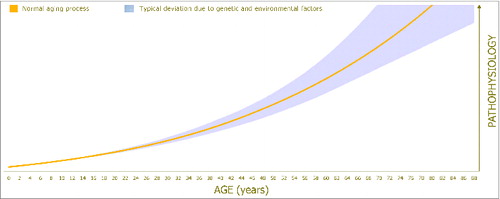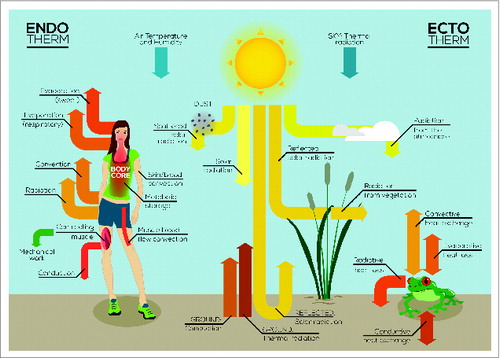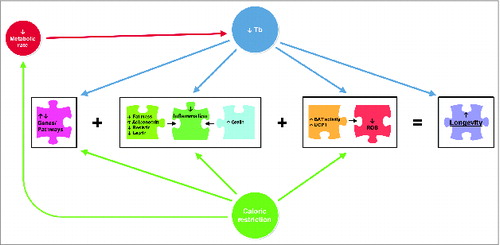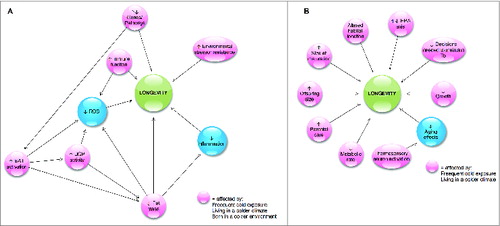Figures & data
Figure 1. The age-associated increase in pathophysiology/disease susceptibility leading to tissue damage and physical decline, as well as the impact of genetic and environmental factors.

Figure 2. The key avenues of heat exchange between the body and the environment that, ultimately, determine body temperature in endotherms and ectotherms.

Figure 3. A conceptual model illustrating the mechanisms linking caloric restriction and reduced body temperature (Tb) and their influence on longevity. Adapted from: Carrillo AE, Flouris AD. Caloric restriction and longevity: effects of reduced body temperature. Aging Res Rev 2011; 10:153–62. Note: BAT = brown adipose tissue; UCP1 = uncoupling protein one; ROS = reactive oxygen species.



